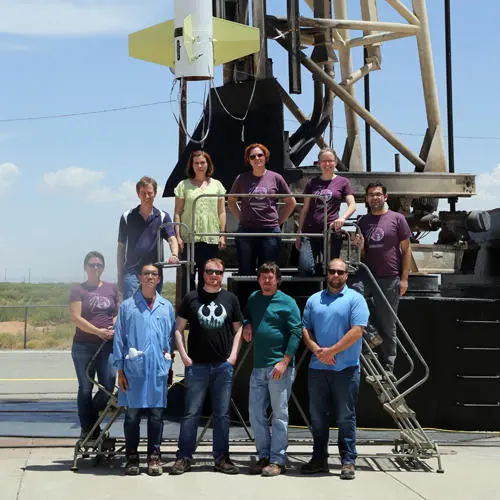NASA-led mission hailed a major success
Working with NASA and other partners from across the globe, scientists at the University of Central Lancashire UCLan) have played a key role in the launch of a rocket-borne camera that aims to uncover some of the mysteries surrounding the outer atmosphere, or corona, of the Sun.
The recent mission, which took place at 2:54 pm EDT May 29, 2018, has already been hailed a major success. The clarity of images returned is unprecedented and their analysis will provide scientists around the world with clues to one of the biggest questions in heliophysics – why the Sun's atmosphere, or corona, is so much hotter than its surface.
The precision instrument, called the High Resolution Coronal Imager or Hi-C for short, flew aboard a Black Brant IX sounding rocket at the White Sands Missile Range in New Mexico. The mission was led by NASA’s Marshall Space Flight Center (MSFC) in Huntsville, Alabama with partners UCLan, the Harvard-Smithsonian Center for Astrophysics, Boston and the Lockheed Martin Solar and Astrophysics Laboratory in Palo Alto, California.
"This was the third launch of Hi-C," said Amy Winebarger, principal investigator for the Hi-C mission at NASA's MSFC. "Our second launch in 2016 had an issue with the camera on-board the telescope of the instrument. So, while we gathered critical engineering data and some images, we did not get the high-quality images of the corona we were expecting. We improved the camera from the last launch and are already getting exciting data from this most recent experiment that could help explain the long-held questions about the Sun's atmosphere."
The UCLan team consisted of Professor Robert Walsh (Jeremiah Horrocks Institute), Dr Darren Ansell and Ben Watkinson (School of Engineering) who participated in field operations and science data analysis post flight. Professor Walsh commented: “We are very excited that UCLan scientists have played an important role in making the HiC rocket flight such a success.”
The telescope on Hi-C, the centrepiece of the payload weighing 210kn and measuring 3 metres long, is designed to observe a large, active region in the Sun's corona in fine detail. The instrument has been improved from the last mission with an updated camera that is expected to improve the data taken from the Sun and the images received. The duration of the space portion of the Hi-C mission provided five minutes of observation time with the telescope acquiring an image about every five seconds.
Scientists anticipate that analysis of the imaging data from Hi-C's third flight will help resolve current questions about connections between the hot and cool regions of the solar atmosphere. To meet this goal, Hi-C's launch and data collection was coordinated with the Interface Region Imaging Spectrograph (IRIS), a satellite observatory that captures images of the cooler portions of the sun’s atmosphere.
"Understanding how the Sun works is important to everyday things we do on Earth," continued Professor Walsh. "Solar flares and disruptions can interrupt radio, GPS communications and satellites that disseminate cell phone signals. By studying how the Sun releases these bursts of energy, we hope to be able to better anticipate them and, in the future, design technology better equipped to withstand these disruptions."
It is anticipated that images from the latest Hi-C mission will be available to the public by the end of the year.


